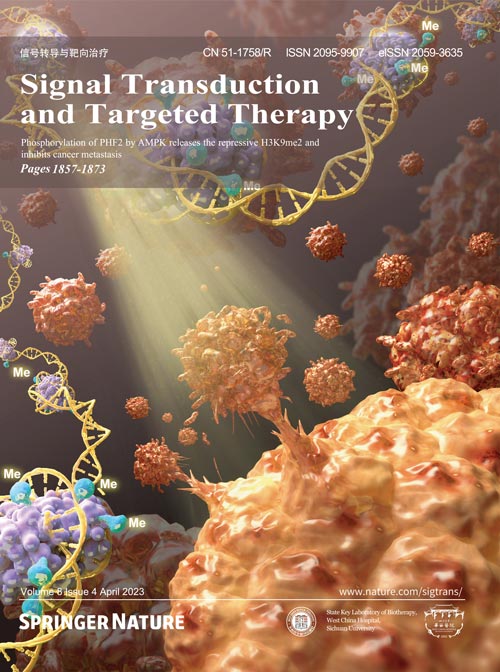Volume 8 Issue 4, Apr 2023:
Article
B cell-derived anti-beta 2 glycoprotein I antibody mediates hyperhomocysteinemia-aggravated hypertensive glomerular lesions by triggering ferroptosis
Xing Du,Xiaolong Ma,Ying Tan,Fangyu Shao,Chun Li,Yang Zhao,Yutong Miao,Lulu Han,Guohui Dang,Yuwei Song,Dongmin Yang,Zhenling Deng,Yue Wang,Changtao Jiang,Wei Kong
ORCID: orcid.org/0000-0001-6720-6810,Juan Feng &…Xian Wang
Hyperhomocysteinemia (HHcy) is a risk factor for chronic kidney diseases (CKDs) that affects about 85% CKD patients. HHcy stimulates B cells to secrete pathological antibodies, although it is unknown whether this pathway mediates kidney injury. In HHcy-treated 2-kidney, 1-clip (2K1C) hypertensive murine model, HHcy-activated B cells secreted anti-beta 2 glycoprotein I (β2GPI) antibodies that deposited in glomerular endothelial cells (GECs), exacerbating glomerulosclerosis and reducing renal function. Mechanistically, HHcy 2K1C mice increased phosphatidylethanolamine (PE) (18:0/20:4, 18:0/22:6, 16:0/20:4) in kidney tissue, as determined by lipidomics. GECs oxidative lipidomics validated the increase of oxidized phospholipids upon Hcy-activated B cells culture medium (Hcy-B CM) treatment, including PE (18:0/20:4 + 3[O], PE (18:0a/22:4 + 1[O], PE (18:0/22:4 + 2[O] and PE (18:0/22:4 + 3[O]). PE synthases ethanolamine kinase 2 (etnk2) and ethanolamine-phosphate cytidylyltransferase 2 (pcyt2) were increased in the kidney GECs of HHcy 2K1C mice and facilitated polyunsaturated PE synthesis to act as lipid peroxidation substrates. In HHcy 2K1C mice and Hcy-B CM-treated GECs, the oxidative environment induced by iron accumulation and the insufficient clearance of lipid peroxides caused by transferrin receptor (TFR) elevation and down-regulation of SLC7A11/glutathione peroxidase 4 (GPX4) contributed to GECs ferroptosis of the kidneys. In vivo, pharmacological depletion of B cells or inhibition of ferroptosis mitigated the HHcy-aggravated hypertensive renal injury. Consequently, our findings uncovered a novel mechanism by which B cell-derived pathogenic anti-β2GPI IgG generated by HHcy exacerbated hypertensive kidney damage by inducing GECs ferroptosis. Targeting B cells or ferroptosis may be viable therapeutic strategies for ameliorating lipid peroxidative renal injury in HHcy patients with hypertensive nephropathy.
